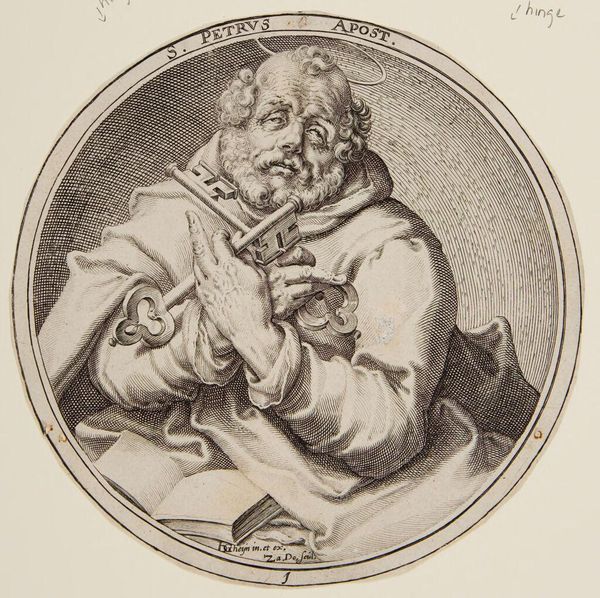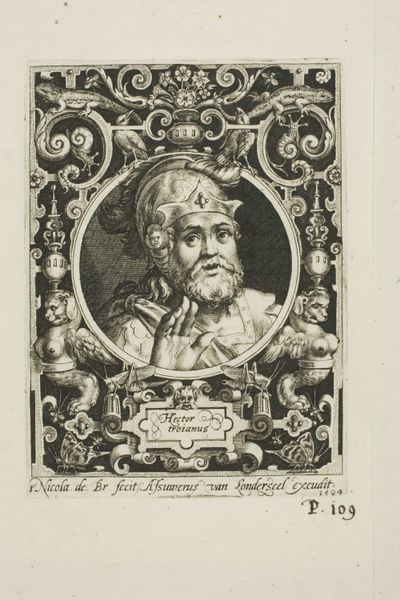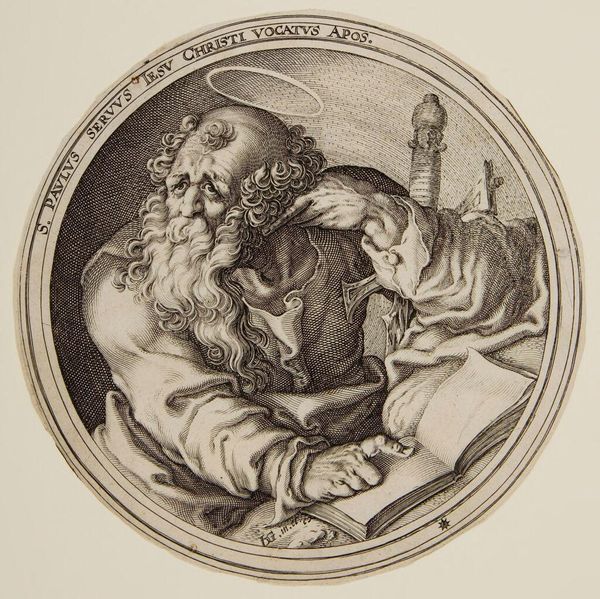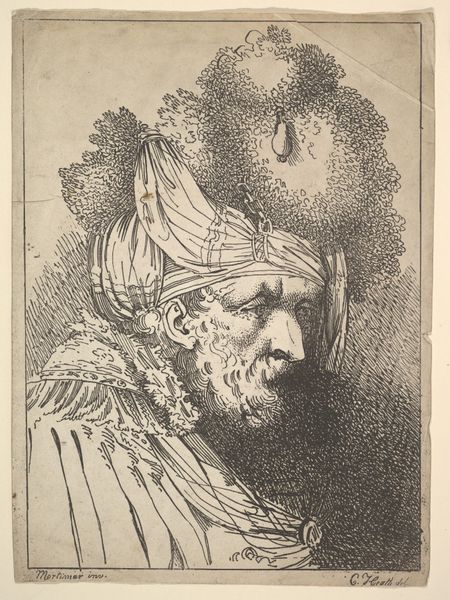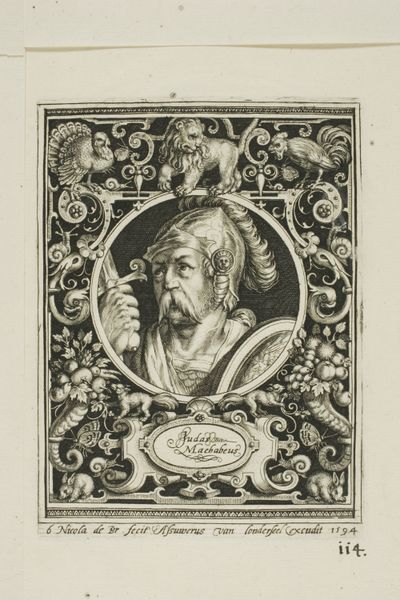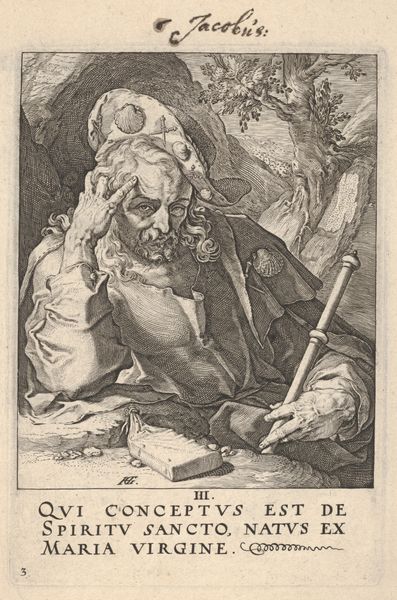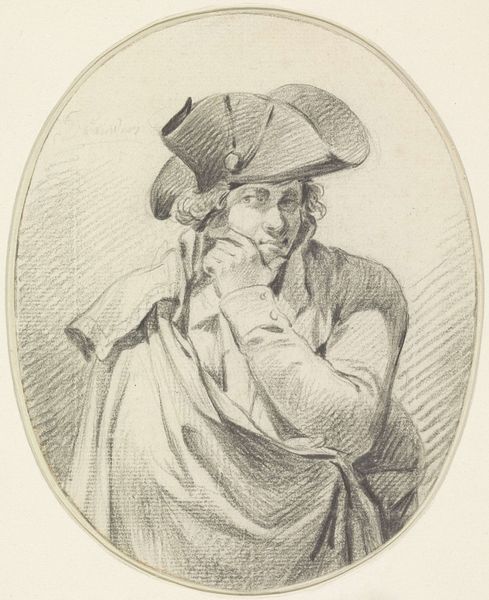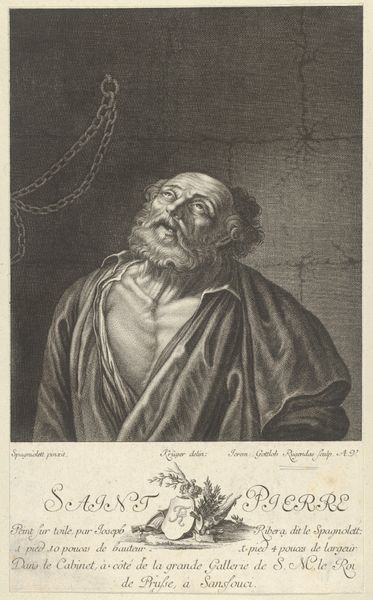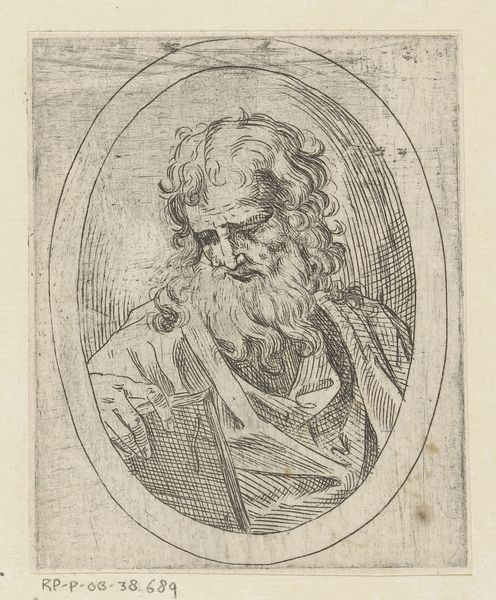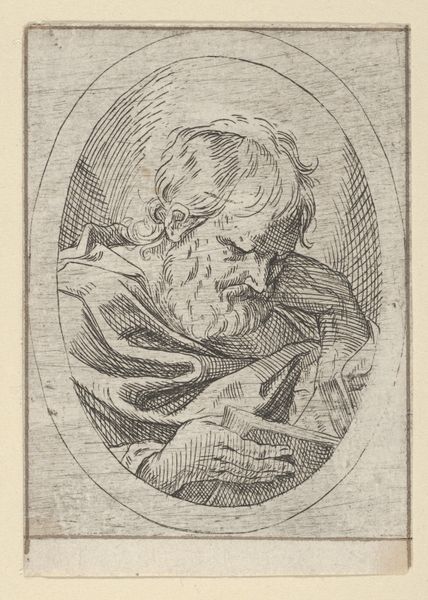
drawing, print, etching, paper
#
portrait
#
drawing
# print
#
etching
#
figuration
#
paper
#
england
#
romanticism
#
line
#
portrait drawing
#
history-painting
Dimensions: 403 × 320 mm (plate); 587 × 444 mm (sheet)
Copyright: Public Domain
Editor: Here we have John Hamilton Mortimer’s print, "Lear," made sometime between 1776 and 1809. It's an etching on paper and what strikes me first is the intensity in Lear's gaze. He looks both tormented and defiant. What do you see in this piece? Curator: This image vibrates with echoes. Mortimer taps into something primal. Lear, as a symbol, encapsulates themes of betrayal, aging, and the loss of authority, which resonate across cultures and time. Notice how Mortimer uses line—almost violently etched—to convey Lear’s inner turmoil. Do you feel that sense of chaos and collapse? Editor: Yes, definitely. The swirling lines around his head, suggesting madness or a storm... It’s pretty powerful. What’s the significance of him touching his head? Curator: That gesture, the hand at the temple, speaks volumes. It's a universal symbol of deep thought, perhaps even madness as you pointed out. But more specifically, within the context of Lear, it suggests a mind fractured, wrestling with its own sanity, and with the injustice of his daughters’ betrayal. It calls into the tradition of depicting psychological intensity visually. The symbols Mortimer utilizes tap into that well of human suffering, do they not? Editor: Absolutely. It makes the work feel very immediate, even centuries later. I now understand what you mean by echoes – the symbols resonate and add more layers to this. Curator: Precisely. This image then acts as a powerful, visual reminder of shared experiences of loss, betrayal, and the enduring power of symbols.
Comments
No comments
Be the first to comment and join the conversation on the ultimate creative platform.

